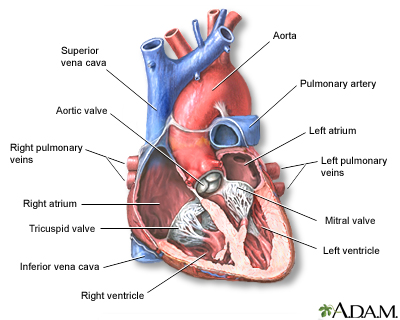 The left ventricular assist device, or LVAD, is a mechanical pump. The purpose of implanting this pump inside a person’s chest is to help a weakened heart ventricle pump blood throughout the body. The LVAD does not replace the heart, unlike a total artificial heart. It just helps it do its job.
The left ventricular assist device, or LVAD, is a mechanical pump. The purpose of implanting this pump inside a person’s chest is to help a weakened heart ventricle pump blood throughout the body. The LVAD does not replace the heart, unlike a total artificial heart. It just helps it do its job.
It can mean the difference between life and death for a person whose heart needs a rest after open-heart surgery. Or is too weak to pump on its own or who is waiting for a heart transplant.
A permanent LVAD is presently being used in some critically ill patients whose condition makes them unsuitable for heart transplantation. It is also called destination therapy.
Studies have shown that therapy with the permanent LVAD device increased the survival rate for patients with end-stage heart failure as compared with drug treatment alone. However, there were some risks including infection, stroke, and bleeding.
How Does an LVAD Work?
Like the heart, the LVAD is a pump. One end hooks up to the left ventricle — that is the chamber of the heart that pumps blood out of the lungs and into the body. The other end connects to the aorta the body’s main artery. A tube passes through the skin from the device. The outside of the tube covered with a unique material to aid in healing and allow the skin to regrow.
The pump and its connections implanted during open-heart surgery. A power pack, a computer controller and a reserve power pack remain outside the body. Some models let a person wear these external units on a belt or harness outside.
The power pack has to be recharged at night.
What Are the Benefits of an LVAD?
An LVAD restores normal blood flow to a person whose heart has been weakened by heart disease. It relieves symptoms such as being always tired or short of breath. And sometimes it lets the heart recover normal function by giving it a chance to rest.





